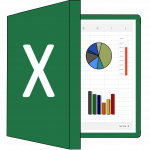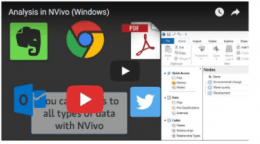 Exploring Microsoft Excel (Essentials) training is scheduled 1:30-3:30 p.m. Friday, June 3 (Fri.), on Zoom.
Exploring Microsoft Excel (Essentials) training is scheduled 1:30-3:30 p.m. Friday, June 3 (Fri.), on Zoom.
About Microsoft Excel
Microsoft Excel is the foremost spreadsheet program in use today.
It is commonly used to:
- Conduct calculations
- Clean data
- Graph or plot data (to identify data patterns)
- Create data visualizations (both static and interactive)
- Apply visual styles to data tables and data visualizations
- Create interactive data visualizations (interactive pivot tables, interactive dashboards with sliders, and others)
- Create simple macros for continuing data handling (with Visual Basic programming language)
- Process data for analytics in other software programs
- Enable the share-ability of information
- Access online survey data (in analyze-able format), and more…
Continue reading “June 3: Exploring Microsoft Excel (Essentials)”
 An “Intro to NVivo” training is scheduled from 1:30-3:30 p.m. Friday, July 16, for all faculty, graduate students, and staff who may be using this qualitative (and mixed methods, multimethods) data analysis tool. This session will occur on
An “Intro to NVivo” training is scheduled from 1:30-3:30 p.m. Friday, July 16, for all faculty, graduate students, and staff who may be using this qualitative (and mixed methods, multimethods) data analysis tool. This session will occur on